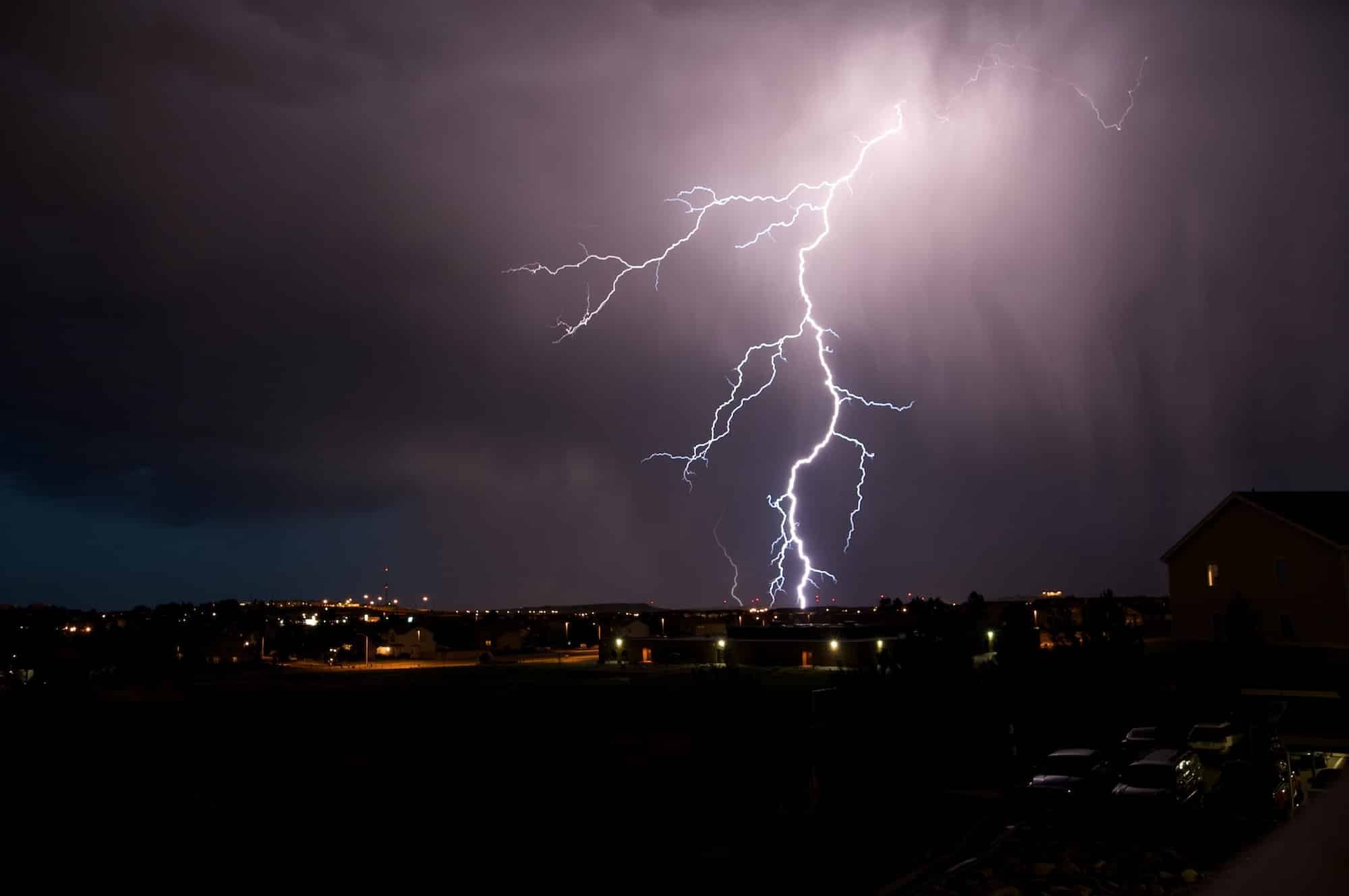
Preventing Storm Damage: A Guide for Maryland Homeowners
Maryland, our beautiful state, is known for its diverse weather patterns. From the majestic fall foliage to the vibrant spring blooms, we experience the full range of seasons. However, this also means we are no stranger to severe weather events. Hurricanes, thunderstorms, high winds, and winter storms are part of our lives. While we can’t control Mother Nature, we can prepare our homes to withstand her might.
The safety and security of our homes are of paramount importance. A well-protected home not only keeps our family and belongings safe but also gives us peace of mind during a storm. It’s worth noting that preventing storm damage is not just a matter of replacing or repairing things after a storm hits. It’s about taking proactive steps to minimize potential damage.
In this comprehensive guide, we, at Prestige Restorations, will walk you through several crucial steps to protect your home from storm damage. We aim to help you understand how you can fortify your home’s defenses against storms, reduce the risk of significant damage, and ensure your home’s longevity. From inspecting and maintaining your roof and gutters to securing outdoor items and preparing for power outages, we will cover it all.
As a trusted Maryland roofing and restoration company, we understand the specific challenges that Maryland homeowners face when it comes to weather-related home damage. We’re here to provide you with practical, actionable advice to help you secure your home effectively against our state’s unique weather conditions.
Regular Roof Inspections
Regular roof inspections are crucial to safeguarding your home against storm damage. Your roof, acting as the primary shield against the elements, is often the most vulnerable part of your home during a storm. A professional inspection at least once a year, ideally before storm season, can help identify and rectify potential problems before they escalate.
Share This Post:
Like us on FaceBook!
Send Us A Message
In between professional inspections, homeowners should keep an eye out for signs of damage. These may include missing, loose, or damaged shingles, damaged flashing around vents and chimneys, and signs of water damage on your ceilings and walls. Each of these could indicate a potential weak point in your roof’s defense.
A comprehensive roof inspection should include checks on the shingles, flashing, gutters, downspouts, soffit, and fascia. Additionally, the attic should be inspected for signs of leaks, insulation issues, and proper ventilation. If an inspection reveals any problems, immediate repairs are necessary. Even minor issues like a few missing shingles can lead to significant damage during a storm.
Regular maintenance, such as replacing worn-out shingles and sealing any cracks or gaps, not only prolongs your roof’s lifespan but also improves its resistance to severe weather. It’s important to remember that the cost of an inspection and minor repairs now could save you from a much larger bill for major repairs after a storm. Plus, a well-maintained roof can increase your home’s value and curb appeal.
Maintain Your Gutters:
Gutters serve a critical function in your home’s defense against storms by directing water away from your property. However, if your gutters are blocked or damaged, they can’t perform this function, potentially leading to water damage during heavy rainfall.
Regular gutter maintenance should be a priority for every homeowner. This involves clearing out any debris, such as leaves and twigs, that could block the flow of water. Over time, this debris can build up and lead to blockages, causing water to overflow and potentially damage your home’s foundation or siding. It’s recommended that homeowners clean their gutters at least twice a year, in the spring and fall.
Additionally, check your gutters for signs of damage. Cracks, holes, or sagging sections can all reduce your gutters’ effectiveness. If you notice any of these issues, it’s essential to repair or replace the affected sections as soon as possible.
Don’t forget about the downspouts – they should be directing water at least five feet away from your home to prevent water from pooling around your foundation. Extensions can be added to downspouts to help achieve this.
In summary, well-maintained gutters can significantly reduce the risk of water damage to your home during a storm. While gutter maintenance might seem like a chore, it’s a small task compared to the potential cost and hassle of water damage repairs.
Secure Outdoor Items
During a storm, high winds can turn unsecured outdoor items into dangerous projectiles, causing damage to your home’s exterior. Outdoor furniture, grills, gardening tools, and even children’s toys can pose a risk if not properly secured.
Before a storm hits, take a walk around your property to identify any items that could be moved by the wind. Smaller items should be moved indoors or into a secure outdoor storage unit. Larger items, like patio furniture or barbecue grills, may need to be anchored down.
Don’t forget about your plants. Potted plants, especially larger ones, can be toppled by strong winds. Consider moving them indoors or into a sheltered area. If that’s not possible, you can secure them by grouping them together and shielding them with a windbreak.
Even items like bird feeders and garden decorations can become airborne in a strong wind. It’s better to be safe and secure or remove these items until the storm has passed.
Securing your outdoor items is a simple but effective step in preventing storm damage to your home. A little time spent preparing can save you the headache and expense of repairs later.
Trim Tree Branches
Trees add beauty and shade to your property, but during a storm, they can pose a threat. Overhanging branches can break off in high winds, potentially causing significant damage to your home’s exterior, including the roof, windows, and siding.
Regular tree maintenance is an essential part of storm-proofing your home. This includes trimming branches that hang over your home, driveway, or any other structures on your property. Remember, it’s not just the large branches that can cause damage; smaller branches can be carried by the wind and strike your home.
If you have dead or dying trees on your property, consider having them removed. These trees are more likely to fall during a storm and could cause extensive damage.
Lastly, keep an eye out for any signs of disease or infestation in your trees. A weakened tree is more susceptible to storm damage and may need to be treated or removed to protect your home.
By keeping your trees healthy and well-trimmed, you can enjoy their benefits while minimizing the risk they pose during a storm.
Check Your Siding
The siding on your home plays a critical role in protecting it from storm damage. It serves as a barrier against wind, rain, and debris, and when it’s compromised, it can allow moisture into your home, leading to potential water damage and mold growth.
Regularly inspect your siding for signs of damage or wear and tear. Look for cracks, holes, or loose sections that might allow water to seep in. If you find any damaged areas, it’s important to repair or replace them promptly.
Additionally, consider the material of your siding. Some materials, like vinyl or fiber-cement, are more resistant to storm damage than others. If your siding is old or frequently requires repairs, it might be worth considering an upgrade to a more durable material.
Properly installed and maintained siding can dramatically increase your home’s resistance to storm damage. It not only protects the structure of your home but also contributes to its aesthetic appeal and energy efficiency.
Prepare for Power Outages
Storms often bring with them the inconvenience and potential dangers of power outages. Such outages can last for extended periods, posing safety risks and disrupting daily life. It’s crucial to prepare for these scenarios to ensure the safety and comfort of your household.
An emergency kit is an essential first step in preparing for power outages. This kit should include items like flashlights, batteries, a battery-powered or hand-crank radio, portable device chargers, a first-aid kit, non-perishable food items, and bottled water.
For households in areas where power outages are common, investing in a generator can be a wise decision. A generator can keep essential parts of your home running, such as the refrigerator, lights, and heating or cooling systems.
Electronic devices are at risk of damage from power surges during outages, so utilizing surge protectors and unplugging devices during a storm can be beneficial.
Households where members rely on medication requiring refrigeration or electric medical equipment should prepare accordingly. This preparation could include having a cooler for medication or ensuring backup power for necessary equipment.
Finally, keeping informed during a power outage is crucial. A battery-powered or hand-crank radio can provide valuable news and weather updates.
While the timing and duration of power outages are beyond our control, we can control our level of preparedness. By taking the necessary steps, you can ensure that your household remains safe and comfortable, even during storm-induced power outages.
Conclusion
In the face of unpredictable storms, preparedness is our most reliable ally. By taking these proactive steps to safeguard your home, you’re not only protecting your property but also ensuring the safety and comfort of those within it.
Regular inspections and maintenance of your roof and gutters can prevent minor issues from escalating into costly repairs. Ensuring outdoor items are secure and trees are well-trimmed can dramatically reduce the risk of damage during high winds. Your home’s siding, acting as a primary shield against the elements, needs regular attention to keep it at its protective best. And planning for potential power outages can keep your household running smoothly even when the weather disrupts essential services.
The task may seem daunting, but remember that every step taken towards storm-proofing your home is an investment in its longevity and value. At Prestige Restoration, we’re here to guide you through this process, providing professional advice and services to ensure your home can stand strong against the storm.

